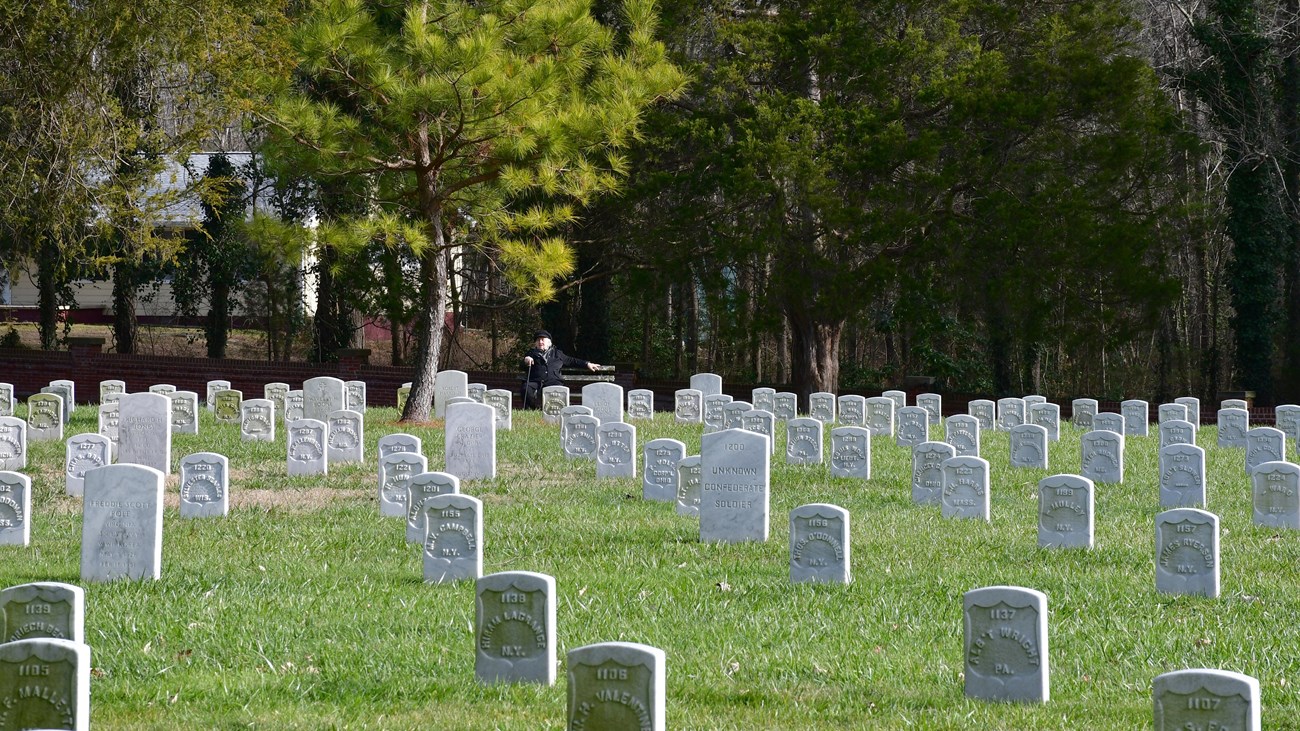Last updated: December 23, 2023
Thing to Do
Visit Poplar Grove National Cemetery

Pat Schmidt/NPS
In Petersburg, the implementation of a National Cemetery did not begin until 1866. During the siege, U.S. soldiers who died during the battles were buried near where the fighting occurred, some in single shallow pits or mass graves. Identifying these burials was difficult, as they often may have only had a name carved on a wooden headboard. Most of these soldiers were not given a proper burial, save what their comrades could provide by saying a few words over them. Like the IX Corps, some units had small cemeteries near their field hospitals for soldiers who had died while in their care.
In 1866, Lt. Colonel James Moore began his survey of the Petersburg area to locate land to build a National Cemetery. The tract of land chosen had been the campground for the 50th New York Volunteer Engineers. During the war, they constructed a gothic-style pine log church called Poplar Grove. With the cemetery now established, the burial corps work moved approximately 5,000 Union soldiers from nearly 100 separate burial sites around Petersburg. Bodies were moved from nine Virginia counties, reaching as far west as Lynchburg, Virginia.
About 100 men comprised the burial corps. With ten army wagons, forty mules, and 12 saddle horses, these men searched and recovered the soldiers buried on the battlefields. One observer noted, "a hundred men were deployed in a line a yard apart, each examining half a yard of ground on both sides as they proceeded. Thus was swept a space five hundred yards in breadth . . . In this manner, the whole battlefield was to be searched. When a grave was found, the entire line halted until the teams came up and the body was removed. Many graves were marked with stakes, but some were to be discovered only by the disturbed appearance of the ground. Those bodies which had been buried in trenches were but little decomposed, while those buried singly in boxes, not much was left but bones and dust."
The burial corps worked for three years until 1869. In that time, they reinterred 6,718 remains, only 2,139 bodies could be identified.
The nearly 30,000 Confederate dead buried at Blandford Church Cemetery in Petersburg suffered much the same fate. Of them, only about 2,000 names are known.
Pets are not allowed within the brick wall surrounding Poplar Grove National Cemetery.
From Crater Road (Route 301):
-
Turn onto Flank Road and follow it until it intersects with Halifax Road.
-
Turn right onto Halifax and then take your first left onto Flank Road again.
-
Follow to the next cross street Vaughn Road and turn left.
Less than a mile on the left side is the entrance to the cemetery.
From I-85:
-
Take the Squirrel Level Road exit and turn onto it, heading south away from Petersburg.
-
After going straight through the first traffic light at Defense Road, keep to your left onto Wells Road as Squirrel Level Road turns sharply to the right.
-
Follow Wells to Halifax Road and turn right.
-
Drive down Halifax to Vaughn Road on the right.
-
Follow Vaughn Road through the Flank Road intersection and to the cemetery as mentioned above.
The pathway through the cemetery is flat and paved. While walking around the cemetery grounds, the surface is uneven; look out for dips and tree roots in the grass.
